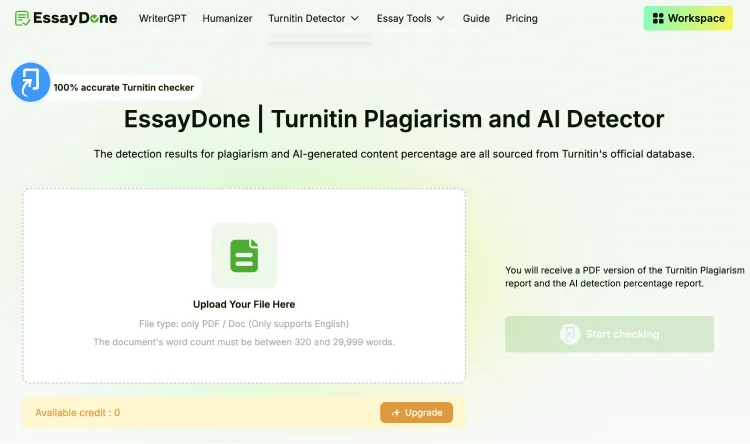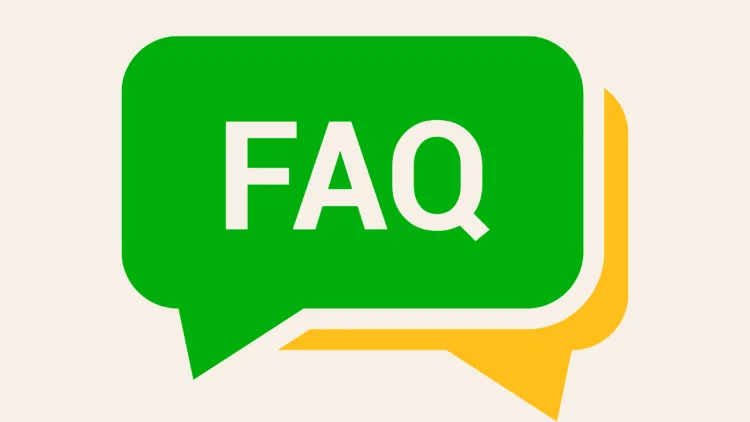What’s a Good Turnitin Score? 15%, 25%, or Something Else?

Wondering what makes a "good" Turnitin score?
Is it 15%, 25%, or something else?
In this article, we’ll break down what those percentages really mean and how to interpret your Turnitin report. Let’s dive in!

What is a Good Turnitin Score?
Typical Acceptable Ranges
When it comes to defining what a "good" Turnitin score is, there isn't a one-size-fits-all answer. Acceptable similarity scores can vary significantly depending on the policies of your educational institution and the specific requirements set by your instructors. A good Turnitin score isn't solely about the percentage; it also involves an assessment of the context in which similarities occur.
Generally, a similarity score of 10% to 20% is considered acceptable. This range suggests that most of the content is original, with some quotes or common phrases matching other sources. It's important to understand that a lower percentage typically indicates less direct copying from source materials, which is usually preferable.
AI Writing Scores
In 2023, Turnitin introduced an AI indicator to their reports, providing a distinct score separate from the similarity index. This score helps educators identify submissions that may have been generated by AI tools like chatbots.
Can students see the AI score on their LMS? No, AI writing scores are typically accessible only to instructors, aiding them in evaluating the authenticity of submitted work.
Are there any alternative ways for students to access Turnitin AI scores? Yes, students seeking a deeper understanding of their work's originality can use tools like the Essaydone Turnitin Detector. This tool provides reports similar to what instructors receive, including both similarity and AI scores, allowing students to make informed revisions before their final submission.

How to Understand the Turnitin Report?
As previously mentioned, the current Turnitin reports feature two types of scores: the similarity score, which is visible on the submission platform, and the AI writing score, which is not visible to students. Understanding both components is crucial for interpreting the report accurately.
Similarity Score
The similarity score reflects the amount of matching or similar text found in a submission, and it is visually represented through various colors on the report icon, each indicating a different level of similarity:
Blue: No matching text (0%)
Green: One word to 24% matching text
Yellow: 25-49% matching text
Orange: 50-74% matching text
Red: 75-100% matching text

AI Score
The AI score is calculated separately from the similarity score and primarily detects the proportion of text that may have been generated by AI tools. The AI scores are as follows:
0%: No AI content detected.
20%-100%: Specific values representing the proportion of AI-generated content.
*%AI: Indicates suspected AI-generated or paraphrased content, ranging between 1%-20%.
Interpreting the Scores
It's crucial to remember that these scores are not definitive indicators of plagiarism or academic dishonesty on their own. Educators also consider other factors when assessing submissions. A high score does not necessarily mean that the submission is entirely plagiarized or problematic. For example:
A 45% similarity might simply be due to the use of common terms, phrases, or references.
A 19% similarity might seem low, but if it highlights entire sentences and paragraphs from other sources that aren’t properly cited, it suggests more serious issues.
Understanding Turnitin reports requires a nuanced approach that goes beyond mere percentages to consider the nature and context of the matched content. This perspective helps both students and educators use Turnitin effectively as a tool for improving academic writing and integrity.
Factors that Lead to Poor Turnitin Similarity Scores
A high Turnitin similarity score doesn't always mean you've plagiarized, but it can raise some concerns. Understanding the factors that contribute to a poor similarity score can help you avoid common pitfalls and improve your academic work. Here are the key reasons for high similarity scores:

1. Lack of Proper Citations
Failing to properly cite your sources is one of the most common causes of high similarity scores. Turnitin flags any uncited text that matches its database, even if the material is paraphrased. Make sure to follow proper citation styles (APA, MLA, Chicago) to give credit where it's due.
2. Excessive Quoting
While quoting is essential in academic writing, overusing quotes can lead to a high similarity score. If your paper consists mostly of lengthy direct quotes, Turnitin will flag them as matching text. Aim to balance quotes with your own analysis and paraphrasing to avoid inflating your similarity score.
3. Paraphrasing Without Attribution
Paraphrasing too closely to the original source can also lead to a high similarity score. If you rephrase a sentence but don't properly attribute it to the original author, Turnitin will still flag it. Always make sure to credit the original author when paraphrasing.
4. Over-Reliance on Common Phrases or Terminology
In certain academic fields, such as law or medicine, technical terms and phrases are used frequently. While these aren't plagiarized, Turnitin may flag them as matching content because they appear in many academic sources. To avoid this, ensure your paper reflects your own analysis, rather than just common terminology.
5. Submitting Drafts or Unfinished Work
Submitting incomplete drafts or work in progress can lead to inaccurate similarity scores. These submissions might contain placeholder text, unedited citations, or content that hasn’t been fully researched. Always submit your final draft for the most accurate assessment.
6. Unintentional Matching of Publicly Available Text
Turnitin may flag content that comes from publicly available sources like blogs or websites. While not necessarily plagiarism, this can still raise your similarity score. Make sure to cite any publicly available content properly to avoid unnecessary matches.
7. Use of AI-Generated Content
AI writing tools like ChatGPT can sometimes produce text that closely matches content from the web, which Turnitin flags. Since Turnitin now detects AI-generated content, papers with significant portions of AI-written text could receive a higher similarity score—even if the AI-generated text is paraphrased.

8. Unexcluded Similarity Indexes
Turnitin allows educators to exclude certain types of matches from being counted in the similarity score. In some cases, educators may exclude certain types of content from the report, such as:
Bibliographies: Citations at the end of papers.
Quotes: Exact match quotations used in the assignment.
Common phrases/terms: Technical or frequently used academic terminology.
However, if these exclusions are not set by the instructor, or if you use unapproved indexes in your submission (like copying sections from textbooks or materials that were not intended to be included in your assignment), they will contribute to your similarity score.
9. Student Collusion
Turnitin also detects similarities between papers submitted by different students. If multiple students collaborate on the same assignment or copy from each other's work, Turnitin will flag these similarities. This is known as student collusion, and it can result in a higher similarity score, even if the work is original in its individual parts.
How to Achieve a Good Turnitin Score
To get a good Turnitin score, focus on both your AI score and similarity score.
1. Lower Your AI Score
Use Tools like Essaydone Turnitin Detector to generate a report similar to Turnitin’s, giving you insight into both plagiarism and AI content in your work.
AI-generated text can sound mechanical or overly formal. Use the Humanizer feature to rewrite AI-detected content, ensuring your work sounds authentic and original.

2. Reduce Your Similarity Score
Cite Sources Properly: Always credit the original author with correct citation styles.
Paraphrase Effectively: Ensure your paraphrasing is original and not too close to the original text.
Limit Excessive Quoting: Balance your use of direct quotes with your own analysis to keep your similarity score low.
3. Review Your Turnitin Report
Once you receive your similarity report, focus on the highlighted areas. Review flagged sections and make revisions to ensure proper citation, paraphrasing, and originality.
FAQ

1. What happens with a 100% Turnitin score?
A 100% similarity score typically indicates no original work in the assignment. It may have been submitted before, either by the same student or someone else, and could suggest issues like reusing old work, collusion, or copying from another student.
2. What percentage is acceptable on Turnitin?
There's no universal "acceptable" percentage, but generally, scores between 10-20% are considered fine, as long as the matches are properly cited or pertain to common phrases. A higher score warrants closer review.
3. What do Turnitin reports not detect?
Turnitin does not flag images, diagrams, print books, foreign language works, or password-protected content. Additionally, reports don't detect plagiarism itself—they simply highlight matching text. Text that is quoted or properly referenced may also show up in the report.
4. Is a 30% Turnitin score high, or is a 25% similarity score bad? Is 20% good?
A 30% score is high and needs closer review. 25% is moderate—it depends on what's matched. 20% is usually fine, as long as it's properly cited. Remember, it's not just about the numbers, but what Turnitin highlights in your paper.
Conclusion
In conclusion, a "good" Turnitin score depends on your institution's standards and the context of the matches. While a higher similarity score can raise concerns, it’s crucial to focus on the quality and source of the matched content, not just the percentage. Happy writing!
